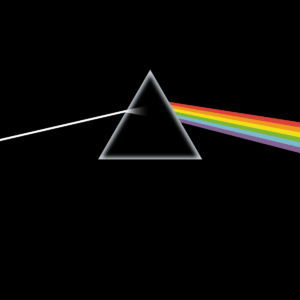Feature: ‘Dark Side Of The Moon’ at 50

‘Dark Side Of The Moon’ was released 1 March 1973 and this year celebrates its 50th anniversary.
Over the past 50 years, ‘Dark Side Of The Moon’ has taken its rightful place atop the echelon of the world’s greatest albums ever. It remains one of the best-selling and most critically acclaimed records of all time, topping Billboard charts for some 14 years.
But ‘Dark Side Of The Moon’s’ legacy extends beyond its accolades and achievements. From the iconic cover artwork to the music itself, the album has been permanently etched into pop cultural consciousness.
The eighth studio album for English proto-prog rockers Pink Floyd, ‘Dark Side Of The Moon’ is the culmination of everything the band had been striving to achieve since the traumatic departure of their original creative engine, Syd Barrett.
The album is Pink Floyd at their most competent, presenting a cohesive marriage of music and narrative that covers the entire span of a single human life with four major themes each accompanied by its own song: ‘Time’, ‘Money’, war (‘Us And Them) and madness (‘Brain Damage’).
It is an epic ponderance of life, death, insanity, war and final peace, greatly influenced by the dark legacy Pink Floyd inherited from Barrett and his LSD-fueled downward spiral.
Recorded in Abbey Road Studios with engineer Alan Parsons, the album is also notable for being Pink Floyd’s first full 24-track recording, allowing for sonic expansion. The band took full advantage of the extra room, incorporating tape looping and other audio technology to achieve DSOTM’s supremely spacey quality.
Ultimately, the making of ‘Dark Side Of The Moon’ is the story of a band coming to terms with itself.
Their 1967 debut ‘Piper At The Gates Of Dawn’ established Syd as Pink Floyd’s lyrical and musical force with his whimsical songwriting and unique approach to playing the guitar.
Syd’s final contribution was the track ‘Jugland Blues’ for sophomore album ‘Saucerful Of Secrets’ in 1968, during which time Gilmour was brought in due to Barrett’s declining mental health.
Following a period of experimentation with subsequent albums ‘Ummagumma’ and ‘More’, their fifth album ‘Atom Heart Mother’ (1970) was Pink Floyd’s first album to hit number one. In 1971 they released the hugely underrated album ‘Meddle’, featuring the sprawling B-side ‘Echoes’.
By the time work on ‘Dark Side Of The Moon’ began in 1972, the band had honed their signature style throughout seven studio albums and ceaseless touring.
“If you take ‘Saucerful Of Secrets’, the track ‘Atom Heart Mother’ then the track ‘Echoes’ – all lead quite logically towards ‘Dark Side Of The Moon’.” David Gilmour says.
Meanwhile, Gilmour had settled into his role – no longer just a stand-in for Syd – and Roger Waters asserted his artistic prowess as sole lyricist for the first time.
The lyrics reflect Waters’ own struggles dealing with the persistent trauma of loss while broadcasting a universally relatable human message: time is money, money is the root of all evil and war is the greatest evil of all.
But the greater tragedy of humanity ‘Dark Side Of The Moon’ illuminates is not only our desire to kill one another but our incessant ambition to destroy ourselves as we compete in an unwinnable race against time; a species cursed to be ever-perched on the brink of madness and annihilation.
To capture the music and message of the album they had created, Pink Floyd wanted a simple and bold cover design compared to pictorial imagery of previous albums.
The iconic prism-and-spectrum motif – designed by Storm Thorgerson from Hipgnosis – is a powerful and all-encompassing representation of the album’s overall concept, narrative structure and sound quality.
‘Dark Side Of The Moon’ is an album that will outlive all of us and destined to be considered by future generations as one of the finest artistic contributions of the 20th century, just as we today marvel the works of Beethoven and Mozart.
Become What You Are’, the new album from The Daisycutters is available now via MADCAP Global Music, JB Hi-Fi and independent music retailers.
